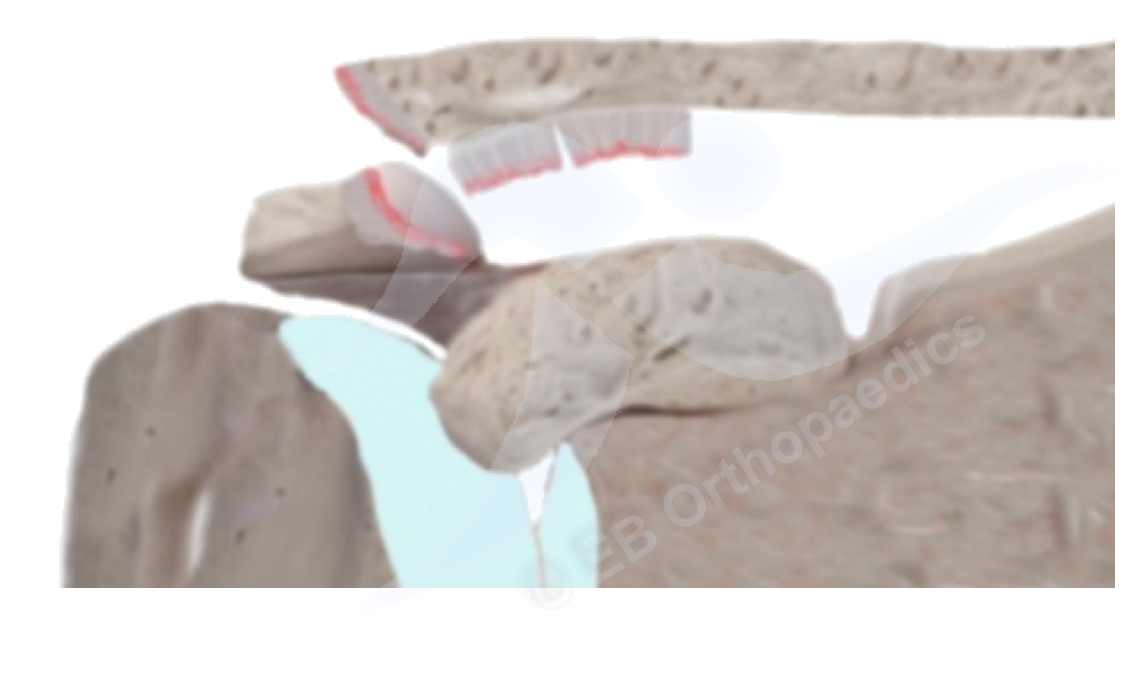ACJ (acromioclavicular joint) disruption

The acromioclavicular joint (ACJ) is the joint formed by the clavicle (collar bone) and the acromion (the top of the shoulder and part of the shoulder blade). Ligaments join the clavicle to the acromion and also run from the clavicle to the coracoid (a finger like projection of bone on the front of the shoulder blade) to control the position of the clavicle.
Acromioclavicluar disruption usually occurs following a fall onto an outstretched hand, with the force travelling up the arm, or alternatively it can follow a fall directly onto the shoulder.
ACJ disruption occurs when the ligaments stabilising the clavicle are torn. The ligaments include the coracoclavicular ligaments which run from the clavicle to the coracoid, and the acromioclavicular ligaments, which run from the acromion to the clavicle. The capsule surrounding the ACJ can also be disrupted.
People usually notice a prominence on the top of their shoulder where the clavicle (collar bone) joins the acromion, although the degree of prominence depends on a person’s build and the amount of disruption of the ACJ. Most people also report pain which tends to be on the top of the shoulder, although it can be more diffuse, especially initially after the injury.
Painkillers and a sling are usually provided in the initial stages and in the majority of cases are usually sufficient. There may be a prominence in the longer term, but the pain often settles and function is not usually noticeably affected.
In some cases, particularly those where there has been a significant disruption of the ACJ with a very prominent lump, or where the bone has gone backwards or downwards, surgery may be advised.
Surgery aims to bring the end of the clavicle to where it was before the injury. The body then heals the torn ligaments with scar tissue in the correct position. The lump is usually improved although a scar from surgery replaces it. In chronic (old) cases a bigger reconstruction operation may be required, so it is better to get matters attended to early.
After surgery you will be given a sling. The sling is usually worn for 6 weeks. Light two-handed activities start at 6 weeks and moderate lifting at 3 months from surgery.
The majority of people are happy with the surgery and get back to full activities including heavy work. The fixation may stretch out a little with time and in some cases the fixation material may need to be removed.